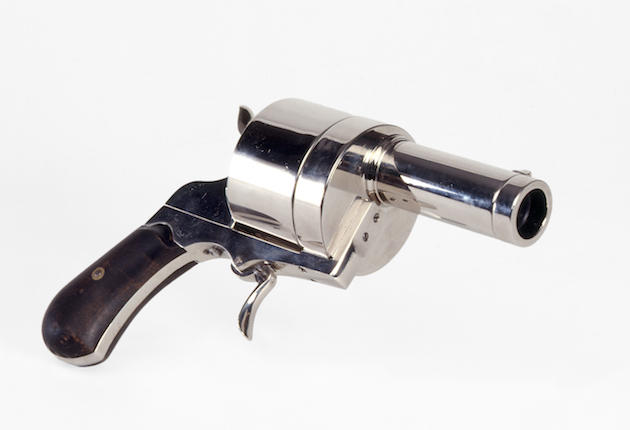Photo via the Preus Museum/Helle K. Hagen
The spy game is a dangerous one. A secret agent needs to be covert when snapping photos of a military installation or a stack of confidential documents, but he should probably carry a firearm just in case his cover is blown. That being said, putting the two tools together is not killing two birds with one stone.
Yet some designers chose to hide their cameras inside non-functional firearms. Many cameras of the 1880s were hidden in different items to avoid detection, as was the case with the French Enjalbert Photorevolver, also known as the Photo-Revolver de Poche. The camera was invented in Paris in 1882 (some sources say by Theophile-Ernest Enjalbert, others Albert Posse for the Enjalbert firm) allowing the user to pull the “gun’s” trigger to close the camera’s shutter.
The photorevolver could make ten exposures through it’s 70mm lens — housed in the revolver’s barrel — with a focal ratio of f/10. The camera featured an external hammer but no trigger guard.
True, the camera didn’t look like a camera, but it still wouldn’t help a would-be spy go incognito. The design’s impracticality may be the reason so few were ever made: Only 14 photorevolvers were built, with only a handful thought to survive today.
Enjalbert doesn’t appear to have been enthusiastic about the design either. He failed to pay for a patent renewal after the first year, allowing the design to lapse into the public domain in 1883.
While they may not be practical or tactical, the photorevolvers fetch a hefty sum because of their unique design and rarity. A camera in average condition can bring as much as $50,000 at auction, with a mint-condition photorevolver approaching $120,000. Collectors are warned against replicas passed off as the real thing for that very reason.

